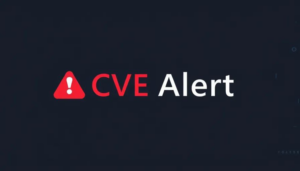CVE Alert: CVE-2025-50129 – SAIL Image Decoding Library – SAIL Image Decoding Library
CVE-2025-50129
A memory corruption vulnerability exists in the PCX Image Decoding functionality of the SAIL Image Decoding Library v0.9.8. When decoding the image data from a specially crafted .tga file, a heap-based buffer overflow can occur which allows for remote code execution. An attacker will need to convince the library to read a file to trigger this vulnerability.
AI Summary Analysis
Risk verdict: High-risk remote code execution potential in an image decoding component; a Proof of Concept exists and network delivery is possible, though user interaction is required to trigger.
Why this matters: Successful exploitation could let an attacker run arbitrary code on affected hosts, with full control and the ability to access or corrupt data. Any deployment that decodes untrusted image payloads—across desktops, servers, or embedded devices—faces a credible risk to confidentiality, integrity and availability of imaging workflows and related services.
Most likely attack path: The attacker delivers a crafted image over a network path to a host running the vulnerable component; the user must perform an action that causes decoding to occur. No privileges are required and the attack involves user interaction, enabling a straightforward initial access vector but limiting reach to hosts with the decoders active. Lateral movement would depend on the compromised host’s role and permissions.
Who is most exposed: Systems and devices that routinely process external images in imaging software, content pipelines, or embedded environments are most at risk, especially where untrusted media can be delivered over the network or via local files.
Detection ideas:
- Crashes or memory corruption events during image decoding, especially on processing crafted payloads.
- Heap-related logs or dumps indicating buffer overflow conditions.
- Unusual memory allocator activity tied to image decoding processes.
- Alerts referencing known PoC patterns or abnormal image payloads being loaded.
- Correlation between image processing activity and subsequent suspicious host behaviour.
Mitigation and prioritisation:
- Apply vendor patch or upgrade to a non‑vulnerable release promptly; verify compatibility in a test environment.
- Restrict image decoding to trusted sources, or disable decoding of untrusted payloads where feasible.
- Enforce least-privilege execution and network segmentation around affected components.
- Implement input screening for image payloads and monitor for decoding errors or memory corruption events.
- Schedule remediation within a formal change window; document testing and rollback plans.
A considerable amount of time and effort goes into maintaining this website, creating backend automation and creating new features and content for you to make actionable intelligence decisions. Everyone that supports the site helps enable new functionality.
If you like the site, please support us on “Patreon” or “Buy Me A Coffee” using the buttons below
To keep up to date follow us on the below channels.

![[Palo Alto Networks Security Advisories] CVE-2025-4614 PAN-OS: Session Token Disclosure Vulnerability 1 Palo_Alto_Networks_Logo](https://www.redpacketsecurity.com/wp-content/uploads/2025/02/Palo_Alto_Networks_Logo-300x55.png)

